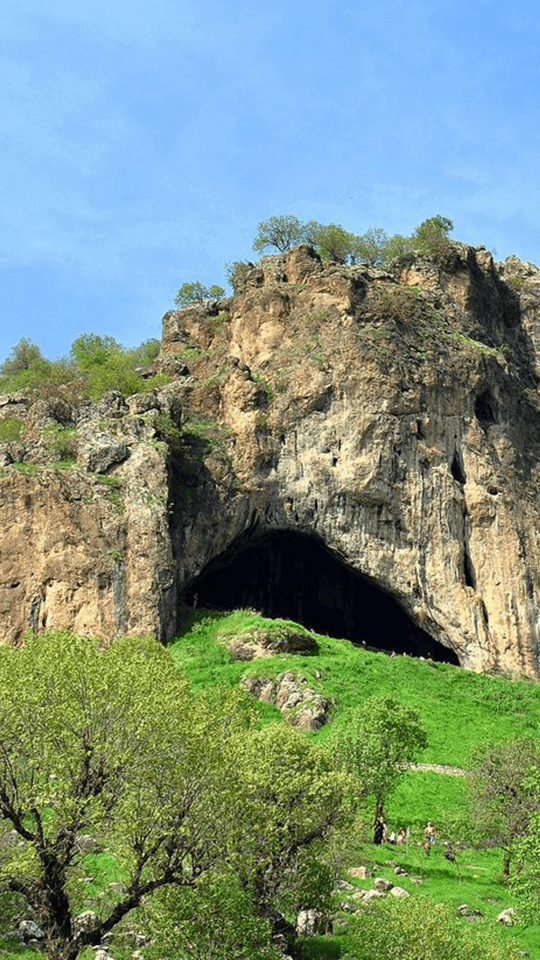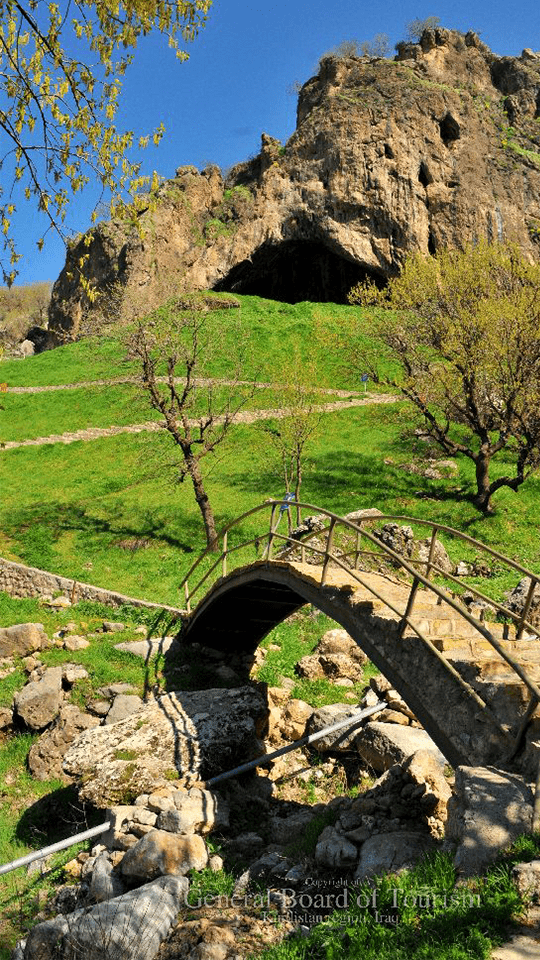
Shanadar Cave
is an archaeological site located on Bradost Mountain in Iraq. The remains of ten Neanderthals, dating from 35,000 to 65,000 years ago, have been found within the cave. The cave also contains two later “proto-Neolithic” cemeteries, one of which dates back about 10,600 years and contains 35 individuals.
The best known of the Neanderthals is Shanidar 1, who survived several injuries during his life, possibly due to care from other members of his band, and Shanidar 4, whose body lay beside a flower that can either be explained as evidence of burial rituals or animal contamination.
The site is located within the Zagros Mountains in the Erbil governorate and lies close to the Great Zab river valley. In February 2020, researchers announced the discovery of more Neanderthal remains, which dated back to more than 70,000 years ago
Anthropologist Ralph Solecki, first explored the site with a sounding in 1951. He returned in 1953, for another sound. The first human body, Mousterian age, possibly Neanderthal, infant, was found. The next season, in 1956–57, conducted soundings at two nearby village sites and continued work at the Shanidar Cave. Three Neanderthal unfossilized skeletons were found at the cave. One was nearly complete, one was fragmentary, and for one only the skull was excavated at that time. Two Neolithic skeletons were also recovered, an infant and female teenager.

